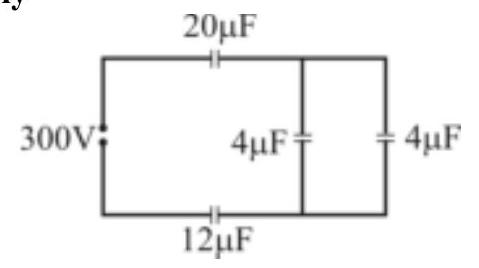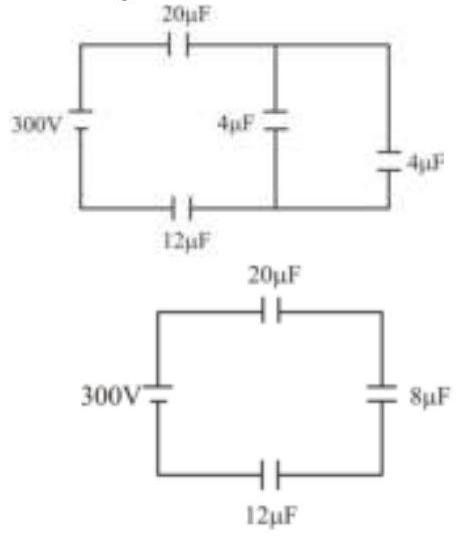165605 Spherical capacitors has outer sphere of radius $5 \mathrm{~cm}$ and inner sphere of radius $2 \mathrm{~cm}$. when the inner sphere is earthed, its capacity is $C_{1}$ and when the outer sphere is earthed its capacity is $\mathrm{C}_{2}$. Then $\frac{\mathrm{C}_{1}}{\mathrm{C}_{2}}$ is
165605 Spherical capacitors has outer sphere of radius $5 \mathrm{~cm}$ and inner sphere of radius $2 \mathrm{~cm}$. when the inner sphere is earthed, its capacity is $C_{1}$ and when the outer sphere is earthed its capacity is $\mathrm{C}_{2}$. Then $\frac{\mathrm{C}_{1}}{\mathrm{C}_{2}}$ is
165605 Spherical capacitors has outer sphere of radius $5 \mathrm{~cm}$ and inner sphere of radius $2 \mathrm{~cm}$. when the inner sphere is earthed, its capacity is $C_{1}$ and when the outer sphere is earthed its capacity is $\mathrm{C}_{2}$. Then $\frac{\mathrm{C}_{1}}{\mathrm{C}_{2}}$ is
165605 Spherical capacitors has outer sphere of radius $5 \mathrm{~cm}$ and inner sphere of radius $2 \mathrm{~cm}$. when the inner sphere is earthed, its capacity is $C_{1}$ and when the outer sphere is earthed its capacity is $\mathrm{C}_{2}$. Then $\frac{\mathrm{C}_{1}}{\mathrm{C}_{2}}$ is
165605 Spherical capacitors has outer sphere of radius $5 \mathrm{~cm}$ and inner sphere of radius $2 \mathrm{~cm}$. when the inner sphere is earthed, its capacity is $C_{1}$ and when the outer sphere is earthed its capacity is $\mathrm{C}_{2}$. Then $\frac{\mathrm{C}_{1}}{\mathrm{C}_{2}}$ is



